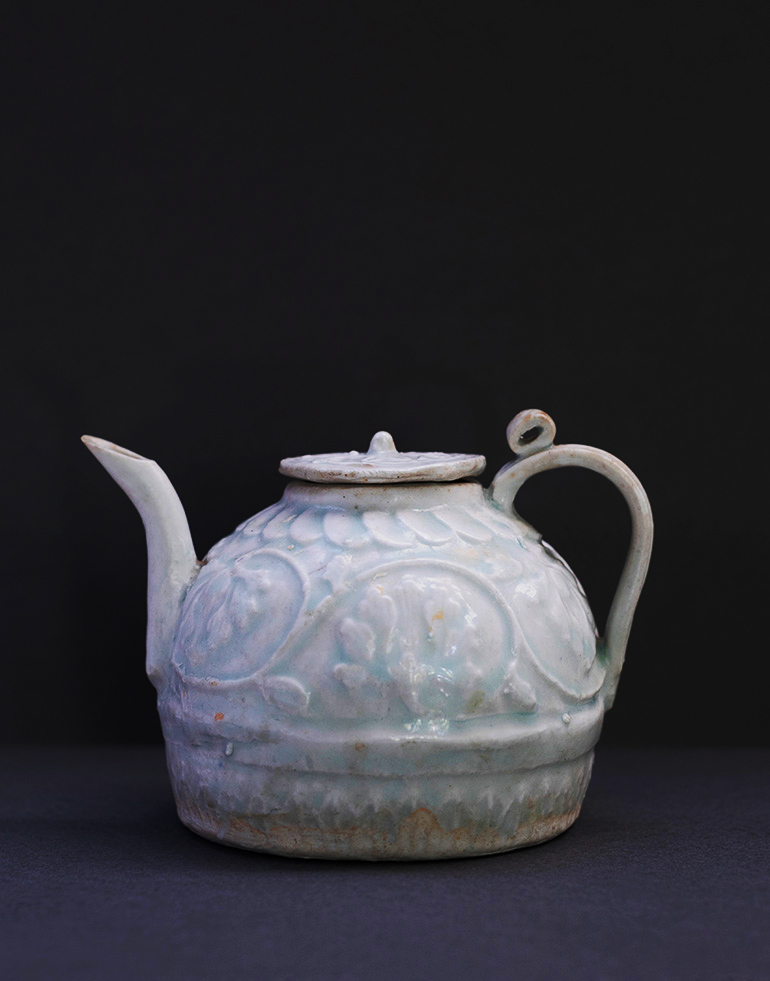YUAN DYNASTY, 13TH – 14TH CENTURY

The ewer is finely molded on the exterior with a band of scrolling peonies between a band of chrysanthemen petals on the shoulder and a band of upright leaves above the base; the cover is further molded with lotus petals. It’s covered in a glaze of a blueish-white tone with exception of the flat base.
8.4 cm high
Peony scroll was a very popular decorative motif in China. In Chinese culture, peony is considered as the ‘King of Flowers’ and ‘Flower of Riches and Honour’, thus indicating the esteem in which it is held. It symbolizes wealth and good fortune. The peony scrolls motif has been widely used on ceramics since Song Dynasty. This miniaturized truncated shaped ewer became popular in the late Southern Song to Yuan dynasty. Different parts of the ewer was molded separately and then put together, this type of piece-molding technique was widely adopted by the potters of Southern China to improve the efficiency of production, in order to satisfy the increasing demand of the oversea market. The separately molded base and body indicates that it was produced in Yuan dynasty rather than Southern Song. The small qingbai ewers like the current one were usually exported from Quanzhou to the South East Asian countries along the maritime silk road. Compare to a shard of a small qingbai ewer was excavated from Jingdezhen, the body is also molded with a band of peony scrolls under a band of chrysanthemen petals, see Hutian Kiln Site in Jingdezhen: Report on excavations from 1988-1999, Beijing, 2007, Vol.2, plate 77, no. 2. See also, a small qingbai ewer with similar shape and decoration in the Museum of Fine Arts, Boston (Accession number: 50.1248). Four similar small qingbai ewers are illustrated in Qingbaici Jingpin Jianshang, Jiangxi, 2012, pp.69-73.
PROVENANCE
Collection of Przemek Werstak, Sydney, Australia.
LITERATURE
Objects of Desire, The Classic Age of Chinese Ceramics Song to Yuan Dynasties, 10th to 14th Centuries, Asian Arts Institute of Australia, Sydney, 2013, cat. no. 27.
EXHIBITED
Sydney, Australia, Asian Arts Institute of Australia, Objects of Desire, The Classic Age of Chinese Ceramics Song to Yuan Dynasties, 10th to 14th Centuries, 2013.